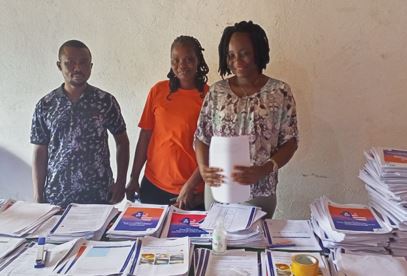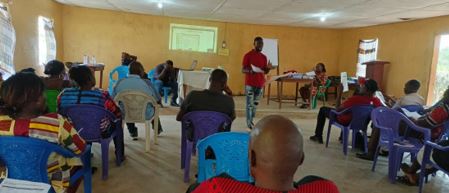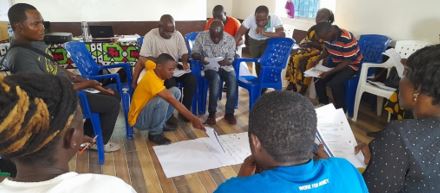By Shahreen Chowdhury, Rosalind Mccollum, Emerson Rogers, Zeela Zaizay & Laura Dean
We are delighted to share the REDRESS Intervention manual – a training package for integrated Skin Neglected Tropical Disease (NTD) case management, including Mental Health Care in Liberia. This manual is the result of a collaborative effort to improve case detection and management of skin NTDs through an integrated approach. It is for use by stakeholders within the Liberian health system to improve the management and support available to people affected by Buruli ulcer, Leprosy, yaws and onchocerciasis, and clinical manifestations of lymphatic filariasis, specifically lymphedema and hydrocele. This manual may also provide learning and approaches that would be useful in other endemic settings.
Over the past two years, REDRESS and its partners have been working in collaboration with the Ministry of Health (MoH) NTD division and other MOH divisions (mental health, community health, county health service and national diagnostic division) essential to the care of people affected by skin NTDs, health workers, community health volunteers and assistants, persons affected by NTDs, traditional and faith healers and researchers and international research and funding partners to design an intervention that is responsive to both biomedical and social support needs. The manual builds on the existing MOH Liberia integrated case management strategy, incorporating findings from the formative phase and from workshops and technical working groups involving key stakeholders (as described above).
REDRESS used a participatory action research cycle to co-create this intervention. The manual was developed after formative research where we conducted a situational analysis to evaluate existing integrated approaches to the detection, referral and treatment of skin NTDs. We used a range of participatory research methods with health workers from the national level to county and community level, informal health providers (such as traditional healers, faith healers, black baggers (informal medicine sellers) and persons affected to understand current gaps from both patient and provider perspectives.
Evidence generated from this phase shaped the co-creation of new and existing interventions for skin NTDs within this manual. We brought core themes together with persons affected, community and health system stakeholders to collaboratively develop new and adapt existing interventions through a series of participatory planning workshops (fig.2)

- This manual aims to support health workers to identify, diagnose, treat and support persons affected by NTDs (specifically leprosy, Buruli ulcer, lymphedema, hydrocele, onchocerciasis and yaws) within the existing patient care pathway. It also includes a focus on how to help persons whose mental wellbeing is affected as a consequence of having (had) an NTD.
The manual is divided into three modules:
Module 1: Case Detection and Integrated Management of Skin NTDs
This module provides an overview of the different skin NTDs and an all-condition clinical algorithm and associated intervention materials . All materials are designed to increase knowledge and awareness on the identification, diagnosis, referral, treatment and ongoing management of suspected cases. Mental health and stigma reduction have also been integrated. Training materials on stigma, providing basic psychological support (BPS-N)1 and mhGAP2(adapted for NTDs and contextualised for Liberia) are also included as well as mental health screening tools.
Module 2: Training
This outlines how health workers and stakeholders at different levels of the health system can be trained on the resource materials, including adult learning principles for training, training agendas, facilitator guides and pre-and post-test assessments.
Module 3: Human resource management for health workers caring for people affected by NTDs
This module outlines the job tasks for health workers who play a role in caring for people affected by skin NTDs from community to regional level, a non-cash award competition, which will seek to improve health worker motivation and performance for NTD care and supervision tools.
Alongside these three modules, are a range of related annexes, which include all the tools (job aids, referral forms, clinical registers, laboratory request forms etc.) that health workers need to provide integrated case management for people affected by skin NTDs at community and facility level.
Between August to October, we are piloting the manual across three counties in Liberia where REDRESS will train:
- 343 Mid-level health workers
- 147 Lab Techs
- 97 Community Health Supervisors
- 2026 Community Health Workers
- 96 Peer Advocates
- 35 Mental Health Clinicians
We are at a very exciting stage of the REDRESS programme, with trainings based on the manual commencing last week in Lofa, Margibi and Grand Gedeh Counties. We look forward to the ongoing success of our partnership and continued learning as we progress through this implementation phase.



- The content of the BPS-N training has been adapted from the World Health Organisation Psychological first aid: Facilitator’s manual for orienting field workers (WHO, 2013).
- The mhGAP component has been adapted from the WHO Mental Health Gap Action Programme (mhGAP) (WHO, 2019)
